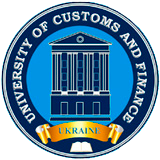Software implementation of neural network technologies for automated textual information classification
Abstract
The results of the analysis of the state of highways suitable for the organiza-tion of high-speed traffic on the route Kyiv-Dnipro are presented, and the main directions of its implementation are identified. The calculations of permissible technical parameters of the movement of vehicles on certain routes. It is shown that the proportion of heavy and large-sized vehicles grows in the transport flows, which leads to the rapid destruction of roads and bridges, which are designed for much smaller volumes and loads. For the introduction of high-speed traffic pro-posed measures to improve the technical level of existing roads. The necessity of intensification of the modernization and repair of roads in Ukraine based on the use of modern technologies, which will create the necessary conditions for the introduction of high-speed road transport.
References
13. Prihodcenko S. D. (2004), “Iskusstvennyy neyron so slozhnoy funktsiyey aktivatsii” [“Artificial neuron with a complex activation function”] // Naukovyy visnyk national’noho hirnychoho universytetu [Scientific Bulleten of National Mining University], vol. 10, pp. 92–95 [Ukraine].
14. Akmal Haidar Md. and O'Shaughnessy D. (2014), “Novel topic n-gram count LM incorporating document-based topic distributions and n-gram counts” // 22nd European Signal Processing Conference, pp. 2310–2314
15. Kalinina І. O. (2009), “Doslidzhennya alhorytmiv navchannya neyronnykh merezh v zadachakh prohnozuvannya” [“Further algorithms for neural neuralz in prediction problems”] // Naukovi pratsi [Chornomors’koho derzhavnoho universytetu imeni Petra Mohyly] [Scientific works. Series: of computer science], vol. 117, issue 104, pp. 160–171 [Ukraine].

 ISSN
ISSN 




